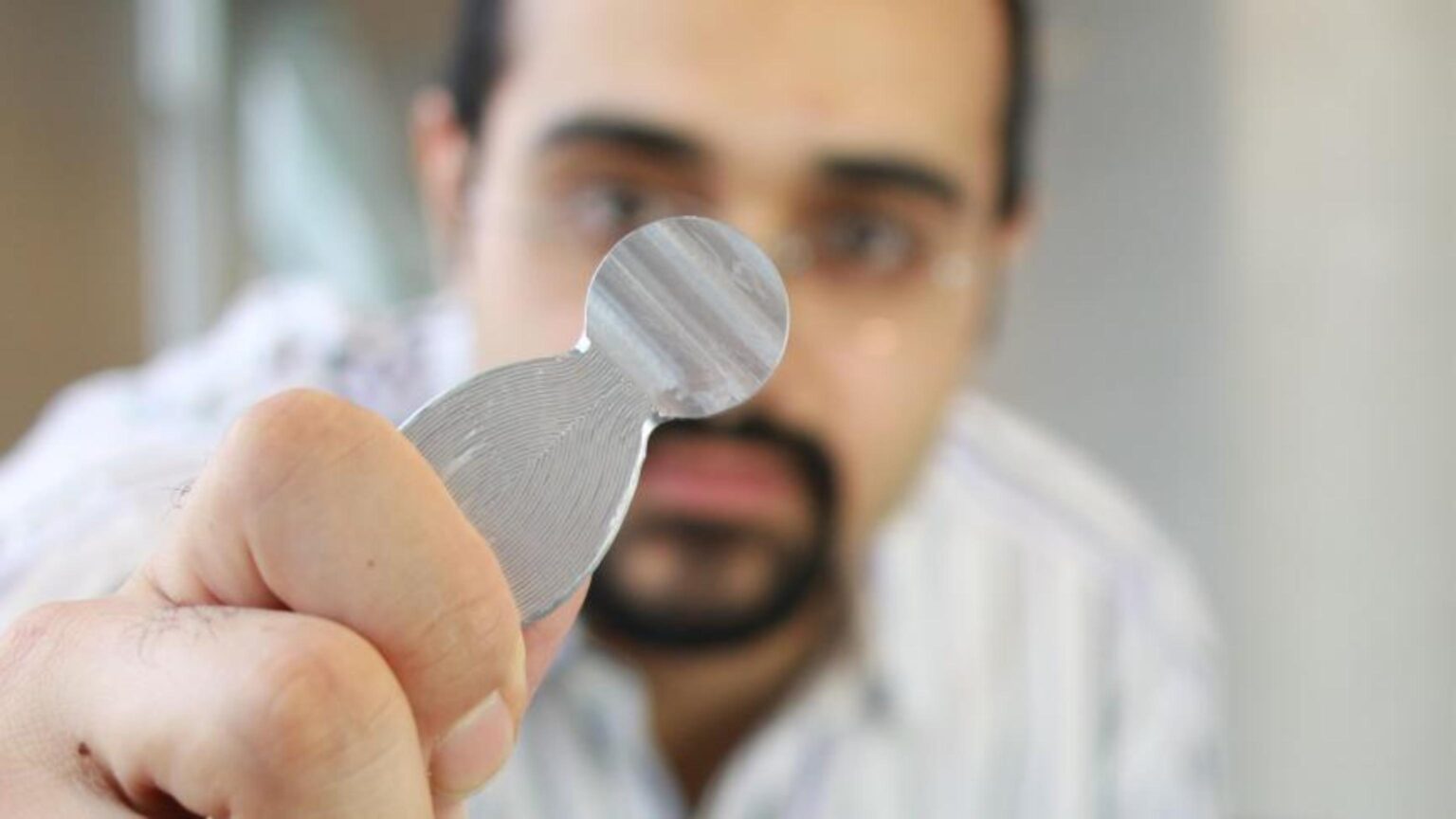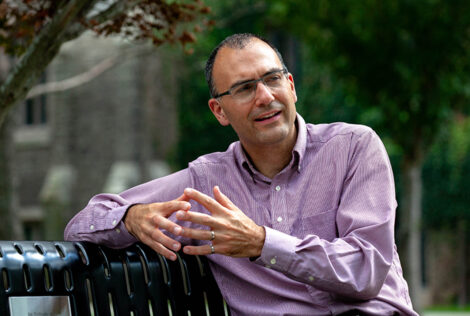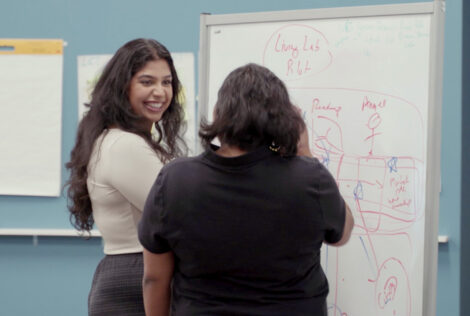

Engineers play a central role in creating a barrier-free world. That’s why the W Booth School of Engineering Practice and Technology invites students to pursue projects that help persons with disabilities overcome problems related to daily living.
The Design Thinking course (SEP 760) taught by Dr. Robert Fleisig offers a platform for this kind of human-centred, experiential learning. Last semester, a team of master level design students completed a health-related project that exhibits the hallmarks of design thinking — a dynamic process for creative problem solving. It’s often presented as an iterative model with five complementary elements: empathize, define, ideate, prototype and test.
The students — Abraham Mousavi, Haysam Fahim and Hamid Saghaeian — began by searching for a person with a disability willing to be a project client. They found Ms. Sandi Mugford, a Hamilton resident with rheumatoid arthritis. This autoimmune disorder affects the joints and causes painful swelling which can lead to bone loss and deformities. In Sandi’s case, it makes routine hand movements, such as gripping, pinching and twisting, difficult or impossible.
The students met with Sandi to establish rapport and begin to understand the various challenges she experiences due to advanced rheumatoid arthritis. During their initial conversation, Sandi talked about her love of fresh food and the physical problems she faces while shopping for groceries. One is carrying heavy items from aisle to aisle and to her car. Sandi said she can’t access a shopping cart because she doesn’t have the hand dexterity to operate the coin-activated lock mechanism. Defining this specific problem marked an ‘aha moment’ for Sandi and the students, and the starting point for the project.
Over several months, the students applied design thinking and technical know-how to create a viable solution. It’s called Coiner — a key-like device with a rounded end piece that mimics a quarter dollar coin. Made of light weight aluminum, it can be attached to the user’s key chain and easily inserted and removed from the lock assembly on most shopping carts. Sandi used the final functional prototype, and it worked. Success has led to the possibility of commercializing Coiner.
This specialized product is the outcome of an iterative design journey that placed Sandi front and centre. During the journey, she frequently met with the students to share additional insights and feedback, respond to a series of preliminary sketches, and test various prototypes. And she offered laughter and encouragement to keep everyone going through the rough patches.
Along side interpersonal skills, such as relationship building and active listening, the students developed technical capabilities in computer-aided design and rapid prototyping. They also learned how to present their work and appropriately respond to the constructive criticism of peers and faculty.
“For many of our students, this holistic approach to engineering design is new and initially uncomfortable,” said Dr. Fleisig. “It’s rewarding to see them embrace discovery, learn by doing and grow through helping others. These are leadership attributes needed to build a brighter world for everyone.”


